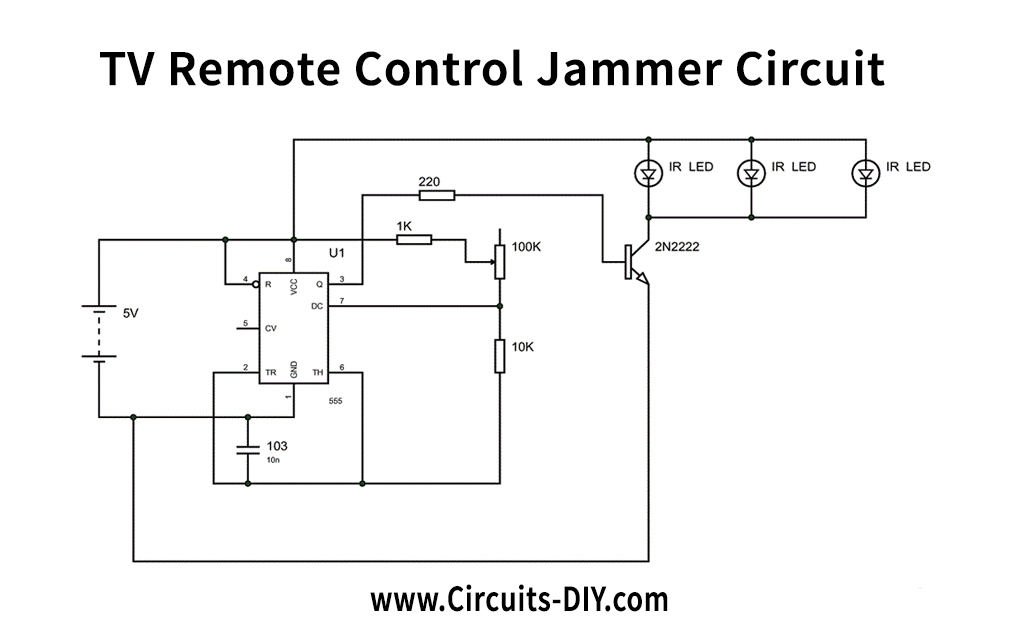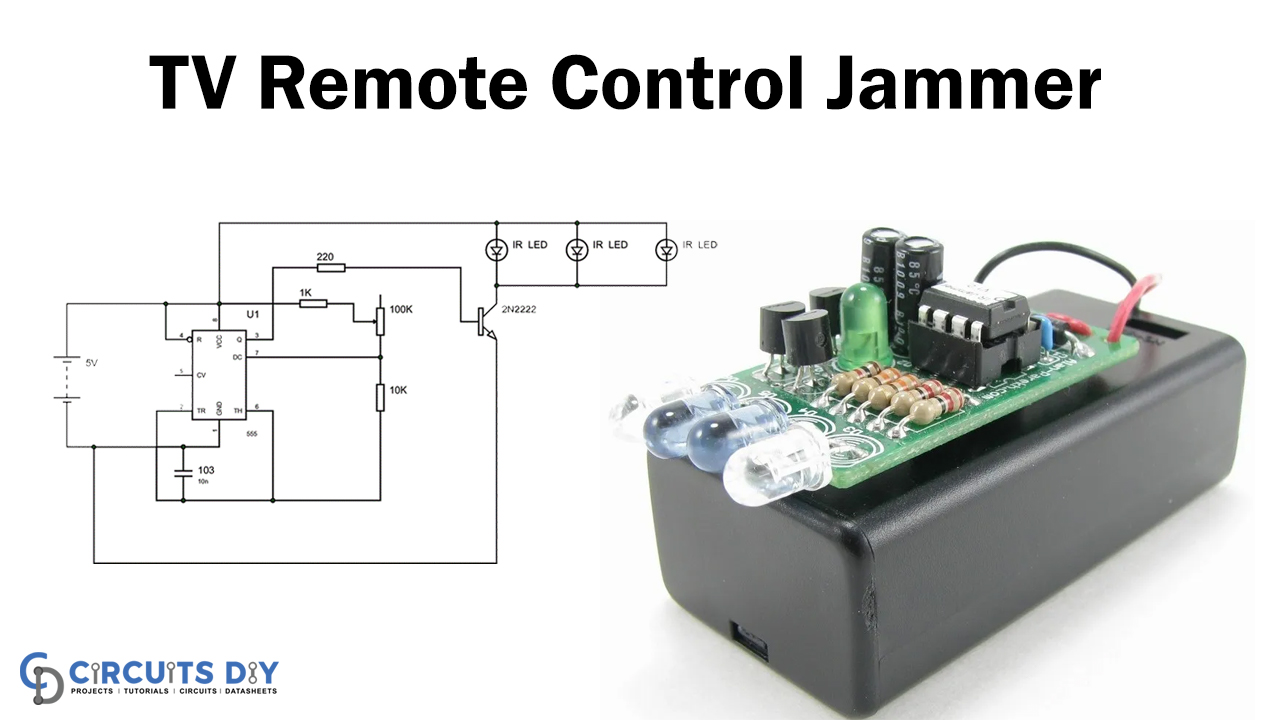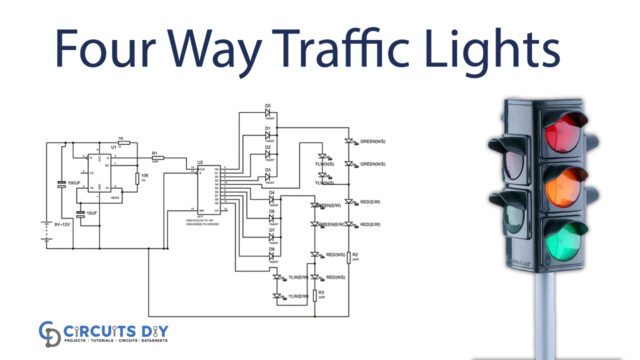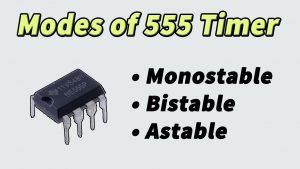TV Remote control is a popular device in our daily lives. Will you like to surprise your family or friends by doing the enjoyable “TV Jammer Circuit” circuit? Yeah, you would use this circuit to interrupt the TV from operating remotely, and no one will know if it would stop working.
This is a basic circuit that blocks contact between TV and remote control. Here in this project, we will make a TV Remote Control Jammer Circuit. This project is easy to make and its parts are easily available in the market.

Hardware Component
The following components are required to make the Remote Control Jammer Circuit
| S.no | Component | Value | Qty |
|---|---|---|---|
| 1. | Power supply | 5V | 1 |
| 2. | IR (Infra-Red) LED | – | 2 |
| 3. | IC | NE555 timer | 1 |
| 4. | Resistor | 1KΩ, 10KΩ, 220Ω | 1, 1, 1 |
| 5. | Transistor | 2N2222 | 1 |
| 6. | potentiometer | 100KΩ | 1 |
| 7. | Capacitor | 10nF or 22nF | 1 |
555 IC Pinout

For a detailed description of pinout, dimension features, and specifications download the datasheet of 555 Timer
Remote Control Jammer Circuit

Working Explanation
A schematic of the TV Remote Control Signal Jammer is shown above. There is a frequency of 32.5 kHz for communication. This suggests a 32 kHz IR LED blinks. It picks up the pulse continuously because it is too fast for a camera to grab.
As shown in the figure below, if one or higher signals are required, the transmitter or remote blinks at 38 kHz. The pulses as we move through the receiving end decoders are seen in the second diagram as a full ONE logic.
Therefore each time a button is pushed, the remote frequency sends out periodically 38 kHz IR pulses. For each button pressed, these intervals vary. The receiver gets the right details about the user requirement and behaves accordingly due to these various periods.
The transistor is supplied with the time output for driving a few or more IR LEDs. The Jammer LED pulses overlap the cycles of contact between television and remote. So, when the jammer is on, the TV still reads HIGH or ONE. Because of this, the transmitter and the receiver can not communicate. This helps to block remote television contact.
Applications and Uses
- This circuit can be used to jam the remote signals so other individuals can’t change the channel when they watch our favorite TV show.
- The receiving capability of the TV will not be affected.














